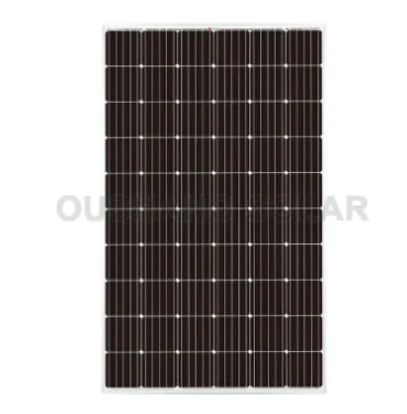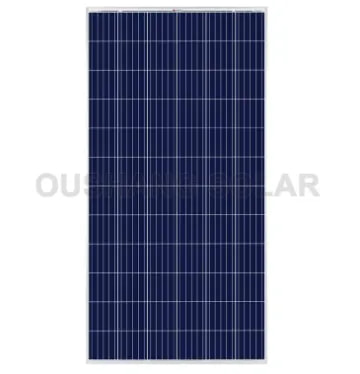60 vs. 72-cell Solar Panels: Which Size is Right for You?
There are many different types of solar panels available on the market, with options ranging in efficiency, wattage, manufacturer, appearance, and more. Panels can also vary in the number of silicon cells they have. Today, most people install either 60 or 72 cell solar panels for their installation- but what's the difference between the two, and which option is best for your installation?
What is a solar photovoltaic cell?
A photovoltaic cell is the component of a solar panel that converts sunlight into electricity. These cells are typically made of a crystalline silicon wafer. When sunlight hits the silicon, electrons in the cell are energized and begin to move, initiating a flow of electricity.
A single solar cell isn't going to produce much electricity; that's why they're grouped together in solar panel modules. The number of cells in a solar panel can vary from 36 cells to 144 cells. The two most common solar panel options on the market today are 60-cell and 72-cell.
What's the difference between 60-cell and 72-cell panels?
60-cell and 72-cell panels can be used in rooftop installations, ground mounts, carports, and more. That being said, 60-cell solar panels are much more common for residential solar installations, while 72-cell solar panels are more commonly used for commercial or other large-scale projects. There are a few key differences between the two that will impact which option you choose, regardless of whether you're installing for your home or business.
• Dimensions
72-cell solar panels have more photovoltaic cells, therefore they are larger than 60-cell panels. When it comes to dimensions, 60-cell panels are usually built six cells wide and ten cells tall. 72-cell panels are also six cells wide but have an additional two rows of cells that make them a bit taller. What does this translate to in feet and inches? 60-cell solar panels have an average dimension of roughly 5.4 ft by 3.25 ft. 72-cell panels will roughly be the same width, and average around 6.5 ft in height.
This extra space can make a big difference when it comes to your solar system design. If you have plenty of uninterrupted roof space or a lot of land for a ground-mounted installation, you can likely go with 60 or 70-cell panels. But, if you're going to have limited space for installation or a more complicated layout (such as a lone panel on a dormer, or a small garage to fit a few panels), most installers are going to recommend 60-cell panels. Because they're smaller, they'll be able to fit in more tight spaces that may not work for a 72-cell panel. The same is true for roofs that are narrow – if your local jurisdiction or fire department has strict setback codes for solar arrays, 60-cell panels may also be the better option because they are shorter. A lot will depend on the specifics of your roof and your preferences for the layout of your array, so it's a good idea to talk to an installer about your options.
• Cost of installing
The cost of installing 60-cell vs. 72-cell panels may also vary a bit for your installation. 72-cell solar panels tend to be cheaper to install on a large scale, which is why they're more common for commercial applications. Because each panel has more solar cells, you can typically install fewer panels to generate the same amount of electricity. Fewer panels mean less racking is necessary, which helps cut down on overall equipment and installation costs.
On the other hand, 60-cell panels are lighter and easier to install which is why they're more common for residential rooftop installations. This can mean lower labor costs for the installation. For large, commercial installations, the extra size and weight of a 72-cell panel aren't as much of an obstacle because cranes are often used to lift the equipment to the rooftop.
• Wattage and power output
72-cell panels can have higher wattages and power output than 60-cell panels because of the additional photovoltaic cells, but that's not always the case. In fact, the number of cells a panel doesn't have a direct correlation to its power output. The power output of a panel is more dependent on the quality and durability of the solar cells themselves.
Other factors to consider when choosing solar panels
When it comes down to choosing your solar panels, the number of cells included in the panel isn't the most important factor. Cost, aesthetics, warranty, efficiency, and durability should all be taken into account when selecting the right solar panels for your home or business.
For cost, it's a good idea to compare your 60-cell and 72-cell panel options on a cost-per-watt ($/W) basis. Similar to looking at dollars per square foot when shopping for a home, looking at $/W shows you what the cost of a turnkey solar panel installation is on a per-watt basis. Looking at this factor will allow you to standardize the price of installations using either 60-cell and 72-cell panels, especially if you're comparing different system sizes.
Panels come in a variety of cell colors (dark blue, blue, black), backsheet colors (white, black) and frame colors (silver, black, and white). If aesthetics are a concern, make sure to look at an image of the panel before signing the contract, or ask your installer for photos of their past installations with the same equipment to get a feel for how they will look on your roof. If you're looking for the sleekest appearance possible, there are many black-on-black panel options. You may pay more for these options, but it can be worth it.
We are a solar panel supplier, please feel free to contact us if you need them!
60 vs. 72-cell Solar Panels: Which Size is Right for You?



